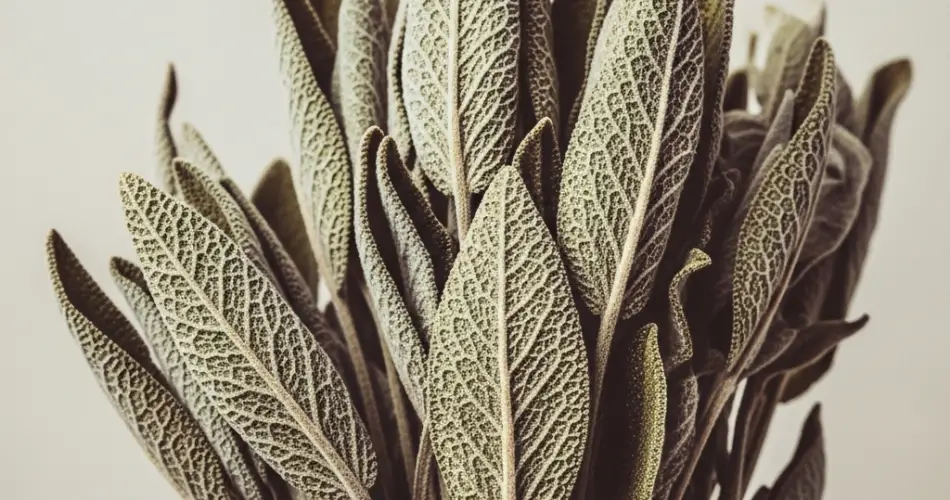Sage is a wonderfully aromatic herb, widely used in cooking, natural remedies, and even home decor. Drying sage is one of the best ways to preserve its flavor for long-term use, especially when you have a large harvest. However, improper drying can lead to a loss of aroma and taste. To retain sage’s essential oils and signature fragrance, it’s important to use the right drying methods and storage practices. This guide will walk you through the best techniques for drying sage while maintaining its rich flavor.
Why Dry Sage?
Drying sage allows you to enjoy the herb year-round, even after the growing season has ended. While fresh sage has a strong and slightly peppery taste, properly dried sage can be even more concentrated. Once dried, you can use it in soups, stews, sauces, meat rubs, teas, and more. Drying also prevents waste and gives you easy access to a pantry staple without needing refrigeration.
When to Harvest Sage for Drying
The timing of your harvest plays a big role in flavor retention. For best results:
-
Harvest sage in the morning after the dew has dried but before the sun becomes too intense. This preserves the essential oils.
-
Pick sage before it flowers, as the leaves have the most oils at this stage.
-
Choose mature but healthy leaves, avoiding any that are yellowing or damaged.
Cut whole stems, leaving at least a third of the plant intact so it can continue growing.
Preparing Sage for Drying
Before drying, follow these preparation steps to ensure cleanliness and maximize flavor:
-
Rinse gently: Rinse sage stems lightly under cool water to remove dust or insects. Be careful not to soak the leaves, as excess moisture can cause mold during drying.
-
Pat dry: Use a clean towel or paper towel to pat the leaves dry.
-
Remove damaged leaves: Discard any wilted or discolored parts.
Once clean and dry, you’re ready to begin the drying process.
Best Methods to Dry Sage
There are several ways to dry sage. Each method has its benefits, depending on your resources and time.
1. Air Drying (Traditional Method)
Air drying is a simple, effective method that doesn’t require electricity and retains a lot of flavor if done properly.
Steps:
-
Bundle 4–6 sage stems together and tie them with string or a rubber band.
-
Hang the bundles upside down in a warm, dry, and well-ventilated area away from direct sunlight.
-
Leave the bundles for 7–10 days, checking occasionally to make sure there’s no mold.
Sage is fully dry when the leaves crumble easily between your fingers.
2. Drying Sage in a Dehydrator
A food dehydrator provides a controlled environment and speeds up the drying process without compromising the oils.
Steps:
-
Remove leaves from stems or lay small sprigs directly on the dehydrator trays.
-
Set the dehydrator to 95–115°F (35–46°C).
-
Dry for 1–4 hours, checking periodically. The sage is ready when the leaves are crisp and brittle.
Dehydrators are ideal for humid climates where air drying might cause mold.
3. Oven Drying Sage
You can also use an oven if you don’t have a dehydrator.
Steps:
-
Preheat your oven to the lowest setting, ideally between 150–170°F (65–75°C).
-
Lay sage leaves in a single layer on a baking sheet lined with parchment paper.
-
Leave the oven door slightly ajar to allow moisture to escape.
-
Bake for 1–2 hours, checking frequently to prevent scorching.
This method works best for small batches but requires careful monitoring.
How to Store Dried Sage
Once your sage is completely dry, proper storage is key to preserving its flavor.
-
Remove leaves from stems if you haven’t already.
-
Store the dried leaves whole if possible; crumble them just before use to retain more aroma.
-
Place the sage in an airtight container, such as a glass jar or tin.
-
Label the container with the date.
-
Store in a cool, dark place—away from heat, moisture, and direct sunlight.
Properly dried and stored sage can retain its flavor for up to one year.
Tips for Best Flavor Retention
-
Avoid drying in direct sunlight—this can cause the essential oils to evaporate.
-
Never store sage before it’s fully dry. Residual moisture can cause spoilage.
-
Keep herbs away from the stove or window ledges where heat and light can degrade them.
To test for freshness later, crush a leaf between your fingers. If it still has a strong, aromatic scent, it’s still good to use.
Final Thoughts
Drying sage at home is simple and rewarding when done correctly. Whether you air dry, use a dehydrator, or try your oven, the key is to handle the herb gently and store it properly. With these methods, you can enjoy your homegrown or store-bought sage for months to come, all while preserving the bold flavor that makes this herb a favorite in the kitchen and beyond.



